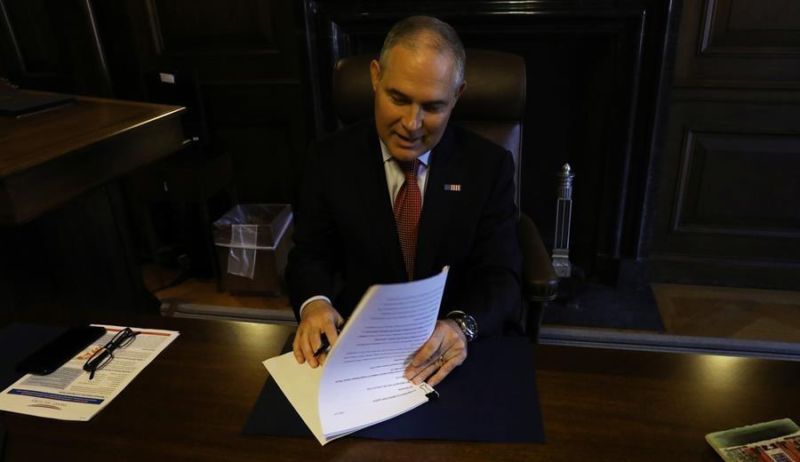In killing the Clean Power Plan, EPA wants a narrow Clean Air Act
Ars Technica » Scientific Method 2017-10-10

Enlarge / EPA Administrator Scott Pruitt. (credit: EPA)
As expected, the Trump administration has launched the process of eliminating its predecessor's Clean Power Plan, which was designed to limit carbon emissions from the electric grid. But what was less expected is the reason the EPA is giving for doing so. It's declaring the Obama administration's approach inconsistent with the text of the Clean Air Act. Rather than regulating a pollutant as a whole, the Trump EPA would like to limit any regulation to the pollution produced by individual sources.
In addition, the EPA is asking for comment on whether it should regulate carbon emissions at all unless Congress specifically tells it to. Rescinding the Clean Power Plan, it says, would, "avoid potentially transformative economic, policy, and political significance in the absence of a clear Congressional statement of intent to confer such authority on the Agency."
Collective vs. individual emissions
The Obama-era EPA proposed the Clean Power Plan to regulate greenhouse gas emissions under section 111(d) of the Clean Air Act. This portion of the statute allows the EPA to set overall standards for emissions of a pollutant for each state; the state would then provide the EPA with a plan for reaching that standard. Those plans should include "standards of performance for any existing source for any air pollutant," and, collectively, this should create the "best system of emissions reduction."